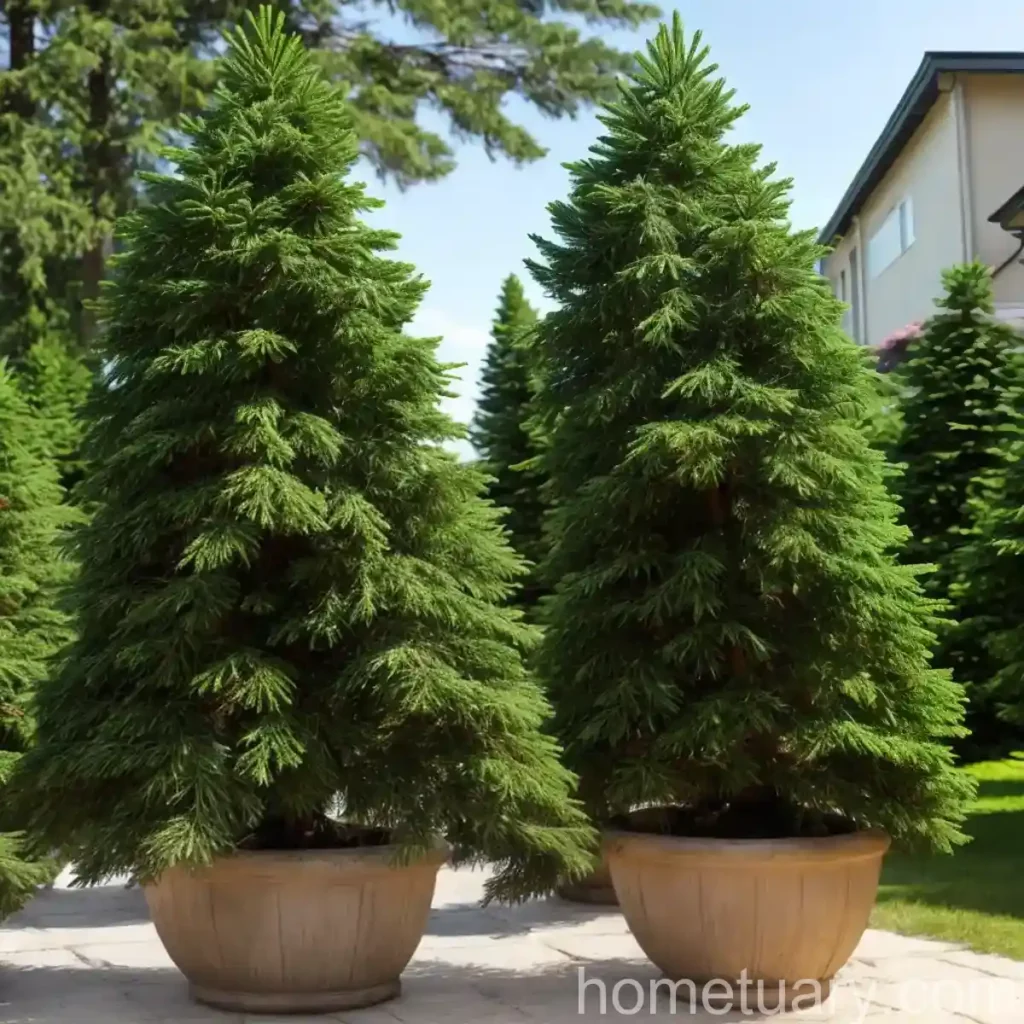Deodar Cedar (Cedrus deodara)
Introduction to Deodar Cedar
Deodar cedar, scientifically known as Cedrus deodara, is a species of cedar native to the western Himalayas in Eastern Afghanistan, Northern Pakistan, Northern India, southwestern Tibet, and Western Nepal, occurring at 1,500-3,200 m (4,921-10,499 ft) altitude.
Key Takeaways – Deodar Cedar
- Common Names: Himalayan cedar, Deodar tree, Indian cedar, Cedar of Himalayas
- Scientific Name: Cedrus deodara
- Uses: Timber, ornamental tree
- Habitat: Western Himalayas
- Features: Coniferous tree with pyramid-shaped crown
Culture
Water
Deodar cedar trees thrive in moist, well-drained soils. It is important to water newly planted deodar cedars regularly for the first year to establish a deep, extensive root system. However, once established, these trees are relatively drought-tolerant.
Sunlight
Deodar cedars require full sun to partial shade for optimal growth. They perform best in locations that receive direct sunlight for at least 6-8 hours per day.
Soil
These trees prefer acidic to neutral soils. Well-draining loamy soils are ideal for deodar cedars, but they can tolerate a range of soil textures, as long as the soil is well-draining.
Fertilizer
Deodar cedars benefit from yearly applications of a balanced slow-release fertilizer in early spring before new growth begins. This helps provide essential nutrients for healthy growth and development.
Pruning
Pruning deodar cedar trees is typically minimal and focuses on maintaining a central leader and removing dead or diseased branches. It is best to prune in late winter or early spring before new growth emerges.
Propagation
Deodar cedars can be propagated from seeds. The seeds should be sown in containers in a well-draining soil mix. When the seedlings have grown to a suitable size, they can be transplanted into larger containers or directly into the ground.
Uses of Deodar Cedar
Deodar cedar holds cultural, ecological, and commercial significance. Here are some common uses and benefits of this beautiful conifer:
- Timber: The wood of deodar cedar is highly valued for its durability and resistance to decay. It is often used in construction, furniture-making, and various carpentry projects.
- Ornamental Tree: Due to its attractive, pendulous, needle-like foliage and graceful habit, deodar cedar is widely planted as an ornamental tree in parks, gardens, and landscapes around the world.
Popularity in Landscaping
Deodar cedar’s striking appearance and adaptability have led to its widespread use in landscaping. It is often employed as a focal point in landscapes and gardens due to its majestic and graceful form, which creates a captivating visual appeal.
Common Diseases of Deodar Cedar
Disease Diagnosis
Deodar cedars are susceptible to certain diseases, including:
- Needle Blight: Needle blight diseases, such as Rhabdocline needle cast and Sphaeropsis tip blight, can cause browning and shedding of needles, leading to defoliation.
- Root Rot: Poorly drained soil conditions can lead to root rot, which can manifest as wilting and dieback of branches.
It is crucial to monitor the trees for any signs of disease and employ appropriate preventive measures and treatments to maintain their health.
Common Pests of Deodar Cedar
Deodar cedars can be affected by various pests, and some of the common ones include:
- Spider Mites: These tiny pests can cause stippling and discoloration of the needles.
- Bagworms: Infestations of bagworms can lead to defoliation and weaken the tree.
Implementing integrated pest management strategies and regular inspection can help in managing pest infestations effectively.
Botanist’s Tips for Growing Deodar Cedar
- Select a well-drained site with ample sunlight for planting deodar cedar.
- Water newly planted trees regularly to establish a strong root system.
- Use a balanced slow-release fertilizer to promote healthy growth.
- Monitor for signs of diseases and pests, and take prompt action when necessary.
Fun Facts about Deodar Cedar
- The word “deodar” is derived from the Sanskrit word “devadāru,” which translates to “wood of the gods.”
- Deodar cedar forests are essential habitats for diverse wildlife, including various bird species and mammals.
- The fragrance of deodar cedar wood is highly valued and is used in perfumery and aromatherapy.
Links to External Resources
- Deodar Cedar: A Majestic Conifer for the Garden
- Cedrus deodara – Missouri Botanical Garden
- Diseases and Pests of Cedrus Species
In conclusion, deodar cedar, with its majestic stature and cultural significance, is a captivating tree that adds beauty and elegance to landscapes, while also playing important ecological and commercial roles. By understanding its specific cultural needs, uses, and potential challenges, plant enthusiasts and horticulturists can successfully cultivate and appreciate the allure of this remarkable species.















